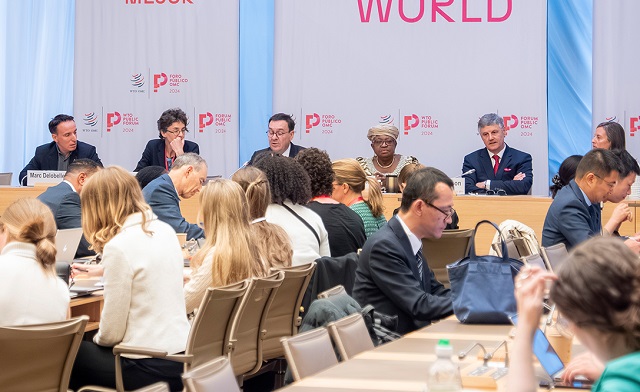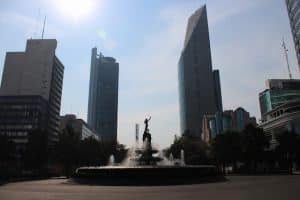Ejecutivos de la industria del acero destacan las normas para alcanzar objetivos ecológicos
Representantes de la industria mundial del acero han subrayado la importancia de alcanzar los objetivos de reducción de emisiones de carbono.

13 de septiembre del 2024.- Representantes de la industria mundial del acero han subrayado la importancia del comercio y de las metodologías comunes de medición de las emisiones para alcanzar los objetivos de reducción de las emisiones de carbono del sector y para transformar las cadenas de acero de bajo carbono. Durante una sesión del Foro Público de la OMC celebrada el 12 de septiembre, los ejecutivos resaltaron también iniciativas que contribuyen a la consecución de sus objetivos, como los Principios de las Normas sobre el Acero, que se presentaron el año pasado en la Conferencia de las Naciones Unidas sobre el Cambio Climático (COP28).
The executives expressed confidence that the steel industry is on the right path towards achieving their carbon reduction goals but underlined the importance of having supportive policies in place, including on trade and on common emissions measurement methodologies.
«Despite the constraints of time, the constraints of funds and training, and research and development, I am quite confident that the global steel industry is on track to reduce CO2 emissions, and this will already be visible by 2030 and 2040,» said Edwin Basson, Director General of the World Steel Association.
Anne van Ysendyck, Vice President and head of government affairs and environment with ArcelorMittal, said the bigger obstacles facing the industry are the lack of supporting policy, which has a catalytic role to play in the decarbonization and the availability and affordability of clean energy so crucially needed to decarbonize the sector.
«In order to induce decarbonization at scale, we really need climate policies and trade policies to converge more and take away barriers instead of creating more and more barriers,» she said, citing differences in carbon pricing policies as an example.
Adina Renee Adler, Executive Director of the Global Steel Climate Council, joined Anne van Ysendyck in welcoming the work on common emissions measurement methodologies through initiatives such as the Steel Standards Principles, which seek to align how greenhouse gas emissions are measured in the steel sector.
«Businesses need open, transparent and predictable markets, which is a mantra here at the WTO,» she said. «For us, that means making sure that all the methodologies, the calculations, the data, anything you want to know about how our members are going to get there is freely available.»
She noted that strategies like the WTO Technical Barriers to Trade (TBT) Committee’s Six Principles for the Development of International Standards, Guides and Recommendations are «at the heart of everything that we do.» Proponents of the Steel Standards Principles have pledged that standards should be consistent with the Six Principles as well as the TBT Agreement Code of Good Practice.
Director-General Ngozi Okonjo-Iweala told the session that the low emission value change adjustments in the steel sector are creating major new opportunities for countries and companies as comparative advantages shift to meet the needs of a net zero economy.
«The ability of a country to provide low-emissions inputs to a value chain is becoming a competitive advantage, and we see that clearly in the steel sector,» DG Okonjo-Iweala said.
The Director-General pointed to Mauritania, where its strong renewable energy potential is complemented by some of Africa’s largest deposits of high-grade iron ore. «Put these together and you have the makings of a green comparative advantage in the low-emission steel value chain,» she said. South Africa and other countries «are similarly well positioned, with the potential for win-win outcomes that lower the overall cost of the steel industry’s green transition.»
Deputy Director-General Jean-Marie Paugam noted that, as one of the largest contributors to global greenhouse gas emissions, the industry faces the dual challenge of maintaining its pivotal role in global trade while significantly reducing its carbon footprint.
«With nearly 25% of global steel production crossing borders annually, the integration of sustainable practices into this industry is not just an environmental necessity but a critical trade issue,» DDG Paugam said.
The WTO Secretariat has been supportive of efforts to assist in the steel sector’s green transformation through the Steel Standards Principles, which have been endorsed by more than 50 key steel producers, industry associations, standard setting bodies, international organizations and initiatives.
Further information on the Public Forum session, «Forging the Future: Trade’s Role in Re-Shaping Low Emission Steel Value Chains,» can be found here.
















